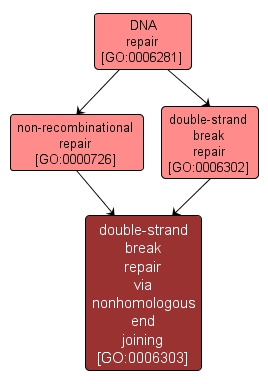GO TERM SUMMARY
|
| Name: |
double-strand break repair via nonhomologous end joining |
| Acc: |
GO:0006303 |
| Aspect: |
Biological Process |
| Desc: |
The repair of a double-strand break in DNA in which the two broken ends are rejoined with little or no sequence complementarity. Information at the DNA ends may be lost due to the modification of broken DNA ends. |
| Synonyms:
|
|

|
INTERACTIVE GO GRAPH
|














